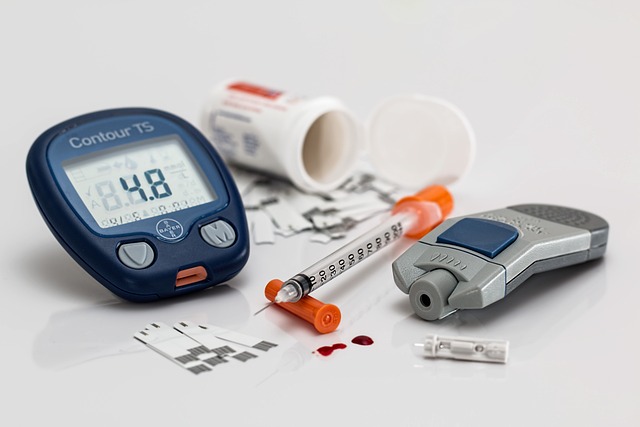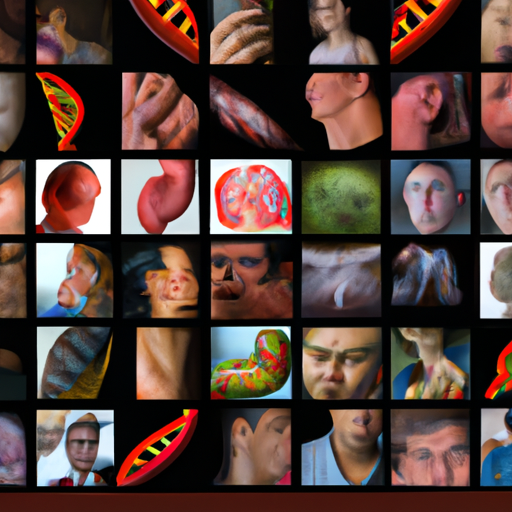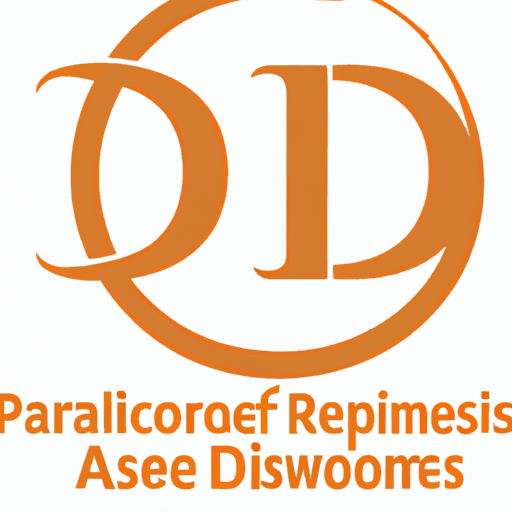
This blog post introduces the reader to the world of rare diseases and the pioneering companies dedicated to developing treatments for these conditions. We delve into the mission, research, and breakthroughs of these companies, providing a comprehensive overview of their monumental efforts in the medical field.
1. The Unsung Heroes: What is a Rare Disease?
Rare diseases, often referred to as orphan diseases, are a group of disorders that affect a small percentage of the population. These conditions, although individually rare, collectively impact millions of people worldwide. To be classified as a rare disease, a condition must meet specific criteria, such as affecting fewer than 200,000 individuals in the United States or fewer than 1 in 2,000 people in Europe. Despite their low prevalence, rare diseases encompass a diverse range of disorders, including genetic, autoimmune, and infectious diseases, as well as certain types of cancers.
- 1.1 Understanding the Rarity:
The rarity of these diseases poses unique challenges, both for those affected and the medical community. With limited awareness and resources dedicated to rare diseases, patients often face delays in diagnosis, difficulty accessing appropriate treatment, and inadequate support systems. Additionally, the lack of research and clinical trials for rare diseases further compounds the difficulties faced by patients and their families. - 1.2 Impact on Patients:
Living with a rare disease can be overwhelming for patients. The symptoms and progression of these conditions can vary widely, making it challenging to develop standardized treatment approaches. Patients may experience physical, emotional, and financial burdens, as well as social isolation due to the rarity of their condition. Moreover, the impact extends beyond the patients themselves, affecting their families who provide support and care. - 1.3 Advocacy and Awareness:
While rare diseases may be overlooked in the larger medical landscape, there are dedicated individuals and organizations working tirelessly to raise awareness and advocate for better support and treatment options. Patient advocacy groups play a crucial role in connecting patients, providing resources, and amplifying their voices to drive change. Furthermore, initiatives like Rare Disease Day, observed on the last day of February each year, aim to increase public knowledge and understanding of rare diseases.

1. A collage depicting various rare diseases.
2. 'Research is to see what everybody else has seen, and to think what nobody else has thought.' – Albert Szent-Gyorgyi: The Role of Research in Rare Diseases
Research plays a pivotal role in advancing our understanding and treatment of rare diseases. Albert Szent-Gyorgyi's quote emphasizes the essence of research: to explore beyond the known and challenge existing perspectives. In the context of rare diseases, research becomes even more crucial due to the limited knowledge and treatment options available.
Research in rare diseases encompasses a wide range of activities, including basic scientific investigations, clinical trials, and the development of innovative therapies. Scientists and medical professionals strive to uncover the underlying mechanisms, genetic causes, and potential therapeutic targets for these conditions. By delving into the intricacies of rare diseases, researchers aim to shed light on their complex nature and identify novel approaches for diagnosis, prevention, and treatment.
In the realm of rare diseases, research often faces unique challenges. The scarcity of patients and limited funding pose obstacles in conducting large-scale studies. However, advances in technology and increased collaboration between researchers and patient advocacy groups have propelled the field forward. The emergence of precision medicine, utilizing genetic and molecular data, has opened new avenues for personalized treatments tailored to the specific needs of individuals with rare diseases.
Moreover, research in rare diseases extends beyond the laboratory. It encompasses epidemiological studies to understand the prevalence and impact of these conditions on a population level. Additionally, social and behavioral research explores the psychosocial aspects, quality of life, and experiences of patients and their families. Such research provides valuable insights into the holistic care and support needed for those affected by rare diseases.
למידע מורחב על specialty pharmaceutical companies וPioneers in Healing: Companies Dedicated to Rare Diseases יש להעיף מבט ב- truemedtx.com
3. Pioneers of Progress: Leading Companies in the Treatment of Rare Diseases
There are several leading companies that have made significant contributions in the treatment of rare diseases. These companies have dedicated their resources, expertise, and innovative approaches to address the unique challenges associated with rare conditions. Under this umbrella, there are three notable subheadings to explore further:
- 1. Pharmaceutical Innovators:
These companies are at the forefront of developing and producing groundbreaking therapies for rare diseases. They invest heavily in research and development to identify potential drug candidates and conduct rigorous clinical trials to ensure their safety and efficacy. Through their efforts, life-changing medications have been brought to market, providing hope and improved outcomes for patients with rare diseases. These pharmaceutical pioneers continue to push the boundaries of medical science, striving to discover new treatments and expand the options available for those in need. - 2. Biotechnology Trailblazers:
Biotechnology companies play a crucial role in the treatment of rare diseases by harnessing the power of biological processes and genetic engineering. They focus on developing advanced therapies, such as gene therapies and cell-based treatments, that target the root causes of rare conditions. By leveraging cutting-edge technologies and scientific expertise, these companies are revolutionizing the treatment landscape and offering potential cures for previously untreatable diseases. Their innovative approaches hold immense promise for individuals with rare diseases and have the potential to reshape the future of medicine. - 3. Diagnostic Advancement:
Accurate and timely diagnosis is often the first step towards effective treatment for rare diseases. Diagnostic companies are dedicated to developing and improving tools and techniques that aid in the identification of rare conditions. Through genetic testing, biomarker analysis, and advanced imaging technologies, these companies enable healthcare professionals to diagnose rare diseases with greater precision. By facilitating early detection and intervention, they contribute to improved patient outcomes and better management of rare diseases. Additionally, diagnostic companies collaborate with research institutions and healthcare providers to gather data and enhance our understanding of rare diseases, ultimately contributing to the development of targeted therapies and personalized treatment approaches.

3. Company logos of leading organizations dedicated to rare diseases.
4. Bridging the Gap: How are these companies making a difference?
These companies are making a significant difference by bridging the gap between scientific research and patient care. Through their tireless efforts, they are bringing innovative treatments and therapies to those who need them most. One way they achieve this is by collaborating with patient advocacy groups and rare disease foundations. These partnerships allow them to gain valuable insights from patients and their families, ensuring that their research and development efforts align with the real-world needs and experiences of those affected by rare diseases.
Additionally, these companies actively engage in clinical trials and studies to gather data and evidence on the safety and effectiveness of their treatments. By conducting rigorous research, they not only advance scientific knowledge but also provide patients with access to cutting-edge therapies that may otherwise be inaccessible. These trials provide hope for individuals with rare diseases who have exhausted traditional treatment options and are seeking new possibilities for improved health outcomes.
Furthermore, these companies are dedicated to educating healthcare professionals about rare diseases and the available treatment options. Through workshops, conferences, and collaborations with medical institutions, they ensure that physicians, nurses, and other healthcare providers are equipped with the knowledge and resources necessary to accurately diagnose and effectively treat rare conditions. This knowledge transfer is crucial in reducing the time it takes for patients to receive a correct diagnosis and appropriate care, potentially saving lives and improving quality of life.
Moreover, these companies are actively involved in advocacy and policy initiatives to raise awareness about rare diseases and advocate for improved access to treatments. They work closely with regulatory agencies, policymakers, and insurance providers to address barriers and streamline the process of approving and reimbursing rare disease therapies. By advocating for policy changes and increased funding, they strive to make these life-changing treatments more accessible and affordable for patients.
5. Aren't We All Rare? The Impact of Rare Diseases on Patients and Families
Rare diseases may affect a small percentage of the population, but their impact on patients and their families is profound. These diseases often come with unique challenges and complexities that can have far-reaching consequences on all aspects of life. From the moment of diagnosis, patients and their loved ones embark on a journey filled with uncertainty, emotional turmoil, and a constant search for answers and support.
Rare diseases can cause physical disabilities, cognitive impairments, and chronic pain, making daily activities and even simple tasks a struggle. Patients may require specialized medical care, therapies, and medications that are often unavailable or difficult to access. This not only adds to the physical burden but also places a significant financial strain on families who may have to navigate complex healthcare systems and insurance coverage.
The emotional toll of rare diseases cannot be underestimated. Patients and their families may experience feelings of isolation, as they often face a lack of understanding and awareness from the general public. The journey can be lonely, with limited opportunities to connect with others who share similar experiences. Moreover, the unpredictable nature of these diseases can lead to constant worry, anxiety, and stress for both the patient and their loved ones.
Rare diseases also impact the social and educational aspects of life. Children with rare diseases may face challenges in school, requiring individualized education plans or special accommodations. Social interactions can be limited, leading to feelings of exclusion and isolation. Siblings and parents may also experience disruptions in their own lives as they navigate the demands of caring for a loved one with a rare disease, potentially affecting their own physical and mental well-being.

5. A photo montage of patients and families affected by rare diseases, showing their strength and resilience.
6. Into the Future: What's on the Horizon for Rare Disease Treatment?
The future of rare disease treatment holds promise and hope for patients and their families. Rapid advancements in medical research, technology, and collaboration are fueling breakthroughs in understanding and treating these complex conditions. One area of focus is precision medicine, which aims to tailor treatments based on an individual's genetic makeup and specific disease characteristics. This personalized approach holds the potential to revolutionize rare disease treatment, offering more targeted and effective therapies.
New therapies, including gene therapies and cell-based therapies, are also on the horizon. Gene therapies involve modifying or replacing faulty genes to correct the underlying cause of a rare disease. This groundbreaking approach has already shown success in treating certain rare genetic disorders, offering the potential for long-term, or even permanent, solutions. Similarly, cell-based therapies involve using cells, such as stem cells, to repair or replace damaged tissues, providing new hope for patients with degenerative or rare conditions.
In addition to innovative treatments, advances in technology are transforming how rare diseases are diagnosed and monitored. Next-generation sequencing, for example, allows for the rapid and comprehensive analysis of an individual's genetic information, enabling earlier and more accurate diagnoses. This technology also plays a crucial role in identifying potential therapeutic targets and monitoring treatment effectiveness.
Collaboration and knowledge-sharing among researchers, clinicians, and pharmaceutical companies are also essential for advancing rare disease treatment. Initiatives such as patient registries, data sharing platforms, and international research networks are fostering collaboration and accelerating research. By bringing together expertise and resources, these collaborative efforts are breaking down barriers and driving progress in understanding the underlying mechanisms of rare diseases and developing targeted therapies.
7. Can You Imagine a World Free of Rare Diseases? The Power of Collective Effort
Imagine a world where rare diseases no longer exist, where individuals and families no longer have to suffer the burdens and challenges that come with these conditions. It may seem like a distant dream, but the power of collective effort and collaboration can bring us closer to making this a reality.
Rare diseases affect millions of people worldwide, and often, research and development for treatments are limited due to the small patient populations. However, by joining forces and pooling resources, we can overcome these obstacles and make significant progress in the field of rare disease treatment.
One of the key drivers of progress is the collaboration between researchers, healthcare professionals, patient advocacy groups, and pharmaceutical companies. By sharing knowledge, expertise, and data, these stakeholders can work together to identify common patterns, develop innovative therapies, and improve patient outcomes. It is through this collective effort that we can harness the power of diversity and build a robust foundation for rare disease research and treatment.
In addition to collaboration within the scientific and medical communities, the involvement and engagement of patients and their families are crucial. Patient advocacy groups play a vital role in raising awareness, advocating for research funding, and influencing policy decisions related to rare diseases. Their collective voices amplify the need for better treatments, increased access to healthcare, and improved quality of life for those affected by rare diseases.
Furthermore, government support and investment are essential for driving progress in rare disease treatment. Increased funding for research, regulatory incentives, and policies that promote the development of orphan drugs can significantly impact the advancement of therapies for rare diseases. By aligning public and private sector efforts, we can create an environment that fosters innovation and accelerates the development of treatments for rare diseases.

7. A globe with people joining hands around it, symbolizing collective effort in the fight against rare diseases.
The fight against rare diseases is a challenging one, but these pioneering companies are at the forefront of this battle, relentlessly working towards finding solutions. By pushing the boundaries of scientific research and technology, they are not only creating hope for those affected by these conditions, but they are also reshaping the future of medicine. Their dedication and commitment serve as a testament to the power of innovation and the unwavering human spirit.
תגובות אחרונות